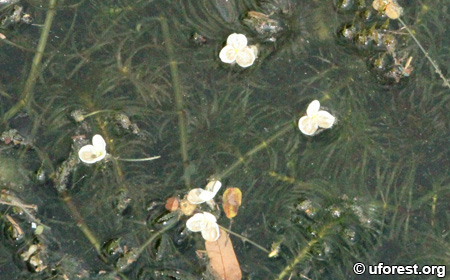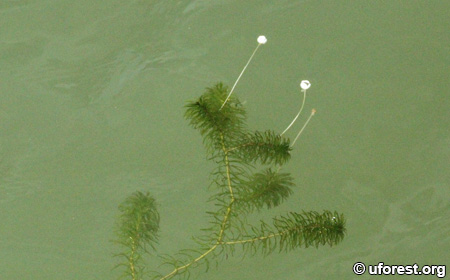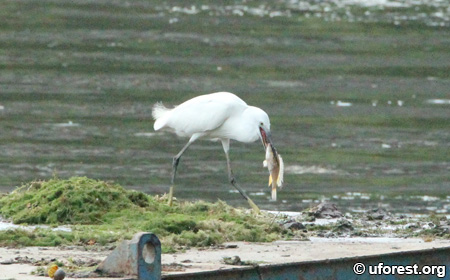| Etymology | Genus | Diminutive of Hydra (water serpent) |
|---|---|---|
| Species | Whorl; referring to the leaf arrangement | |
| Family | Hydrocharitaceae | |
| Synonyms | - | |
| Common Names | Hydrilla, Water Thyme | |
| Status | Cryptogenic | |
| Form | Herb | |
| Native Distribution | Africa, Europe, Asia, Australia | |
Diagnostics:
Hydrilla verticillata is a fully submerged aquatic herb. It is heavily branched with narrow serrated leaves that are arranged in whorls. Where they are found, they usually occur in dense masses. The female flowers extend via a long stalk to float on the water surface. The male flowers, on the other hand, detaches from the plant and unfold the petals on the surface, where the anthers will then dehisce explosively and release the pollen to fertilise the female flowers.
It resembles another problematic freshwater weed, Mayaca fluviatilis but the latter has a spiral leaf arrangement and no serrated leaves.
Interesting Facts:
The Hydrilla is considered a wide-spread invasive species, forming dense clumps, thus outcompeting native species and clogging waterways. It is likely introduced in many areas due to its popularity as an aquarium plant (and their subsequent indiscriminate release into waterbodies). Eradication of the weed is near impossible, as fragments of the plant can reproduce individually; their underground tubers can lie dormant for up to 4 years; and their tolerance and adaptability to varying light and water conditions (CABI, n.d.).
In Singapore, they are actively removed from reservoirs through contractors hired by PUB. It does however, provide some useful ecological services, like the removal of nutrients, trapping of sediment and a refuge/nursery for fishes and dragonfly nymphs (Tan et al., 2010). I have also observed egrets, herons and mynas opportunistic fishing of cichlids and other small fishes when the weeds are removed from the water, proving their use as a place of refuge.

A clump of Hydrilla in Lower Seletar Reservoir (2018).

Whorled arrangement of leaves.

White female flowers sticking out from the water surface.

A branch showing the long flower stalks.

Removal of Hydrilla from the reservoir.

Egrets and Herons feeding off fishes on a dumping platform.

Opportunistic feeding from an Egret, plucked when the weed was first lifted from the water.
References
CABI (n.d.). Hydrilla verticillata (hydrilla). Invasive Species Compendium, Centre for Agriculture and Bioscience International. https://www.cabi.org/ISC. Accessed on 1-Jan-2018.
Tan H, Chou LM, Yeo DCJ, Ng PKL (2010) The Natural Heritage of Singapore. Prentice Hall.
Author: Siyang
Posted: 2019-01-07 / Modified: 2025-10-27